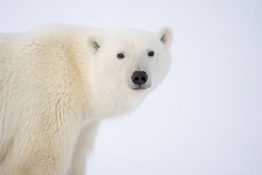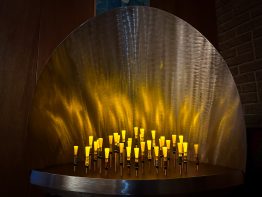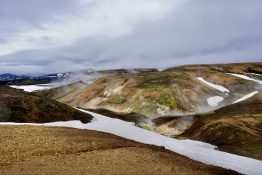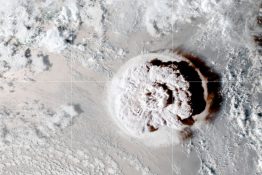The American Geophysical Union announced Sept. 13 that five University of Washington faculty members, including several from the College of the Environment, have been elected as new fellows, representing the departments of astronomy, Earth and space sciences, oceanography, global health and environmental and occupational health sciences. The Fellows program recognizes AGU members who have made exceptional contributions to Earth and space sciences through a breakthrough, discovery or innovation in their field.
Read more at UW News »Study connects greenhouse gas emissions to polar bear population declines, enabling greater protections under Endangered Species Act
New research from the University of Washington and Polar Bears International in Bozeman, Montana, quantifies the relationship between greenhouse gas emissions and the survival of polar bear populations. The paper, published online Aug. 31 in Science, combines past research and new analysis to provide a quantitative link between greenhouse gas emissions and polar bear survival rates. A warming Arctic is limiting polar bears’ access to sea ice, which the bears use as a hunting platform.
Read more at UW News »The art and science of Dale Durran
While most of his days are spent unraveling the intricacies of weather patterns and atmospheric dynamics, Professor of Atmospheric Sciences Dale Durran has embraced metal work to express his passion for the natural world. With a curiosity that reaches far beyond the confines of the laboratory, Durran crafts works that infuse the interplay of science and creativity into each unique piece.
Read more »Ice cores show even dormant volcanoes leak abundant sulfur into the atmosphere
Volcanoes draw plenty of attention when they erupt. But new research led by the University of Washington shows that volcanoes leak a surprisingly high amount of their atmosphere- and climate-changing gases in their quiet phases. A Greenland ice core shows that volcanoes quietly release at least three times as much sulfur into the Arctic atmosphere than estimated by current climate models.
Read more at UW News »Signals from the ionosphere could improve tsunami forecasts
Research from the University of Washington shows that signals from the upper atmosphere could improve tsunami forecasting and, someday, help track ash plumes and other impacts after a volcanic eruption. A new study analyzed the Hunga Tonga-Hunga Ha’apai eruption in the South Pacific earlier this year. The Jan. 15, 2022, volcanic eruption was the largest to be recorded by modern equipment.
Read more at UW News »





